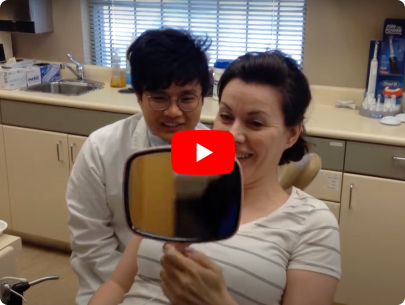Vancouver & Surrey
Orthodontists
Specialists in orthodontic treatments that provide a lasting solution for misaligned teeth, crowded teeth, overbite, and other dental issues.
Our Doctors

Dr. Cheng Lun Wang
Specialty: Certified Specialist in Orthodontics
✓ Practicing since 1994
✓ Part-time clinical instructor at UBC Graduate Orthodontic program
✓ Dr. Wang also provides treatment for head pain and jaw pain
✓ Fluent in Mandarin

Dr. Kevin Lee
Specialty: Certified Specialist in Orthodontics
✓ Practicing since 2015
✓ Dr. Lee also provides treatment for Botox Cosmetic injections and Sleep Apnea oral appliance
✓ Fluent in Mandarin

Dr. Yan Liu
Specialty: Certified Specialist in Orthodontics
✓ Practicing since 2001
✓ Dr. Liu is an associate Professor at Peking University and UBC Graduate Orthodontic program.
✓ Fluent in Mandarin

Dr. Yashodhan Milind Bichu
Specialty: Certified Specialist in Orthodontics
✓ Practicing since 2016
✓ Dr. Yash has worked in Dubai and is experience in providing lingual braces
✓ Fluent in Hindi/Urdu and conversational in Arabic and Punjabi.
Types of Braces
The team at PacificWest Dental Group offers several types of braces. We cater to the needs of each patient to provide proper treatment. During your appointment, we will discuss your options to help you make an informed decision. Here are the types of braces we offer and their benefits.
As the most common type of braces, these appliances are made of medical grade stainless steel. Comfortable and lightweight, they straighten your teeth using metal brackets and archwires. You can customize the look of these braces with colourful elastics. They are the most economical option.
If you want to straighten your teeth in style, consider this cosmetic option that still delivers results. These braces perform the same as their stainless steel counterparts but stand out more with gold plating. The costs are similar to stainless braces, but it’s a matter of preference.
Made of clear materials, these braces are almost invisible. Older teenagers and adult patients with cosmetic concerns choose this option. They require attention to oral hygiene because they tend to be larger and more brittle than metal braces. However, ceramic braces are less noticeable and mostly used on the upper front teeth.
Invisalign requires wearing invisible, removable, and comfortable aligners to straighten teeth. They are nearly Invisable, and because they are removable, you can eat and drink what you prefer during treatment. However, compliance is of the utmost importance to the success of the treatment. Please consult with our orthodontists to see if Invisalign is suitable for your situation.
Hidden behind the teeth, lingual braces are not visible when you smile. Adults may choose this discreet option to straighten their teeth without hassle. Our team will customize these braces to match the shape of your teeth and create the appliances just for you.
Common Conditions We Treat
While every patient is unique and present with a different set of problems, there are several common types of malocclusion that our clinic staff see on a regular basis. These include:


Crowded Teeth
Crowded teeth or overcrowding takes place when the jaw bone is too small for teeth to grow into the mouth on a straight trajectory. As a result, the teeth need to rotate and overlap against each other to fit in, creating crookedness and malalignment.


Irregular Spacing
Like a jigsaw puzzle, teeth needs to be in a certain shape and size to have the best fit against each other.


Open Bite
An open bite occurs when the front upper and lower teeth slant in an outward direction, preventing them from touching each other when the patient bite down.


Under Bite
The opposite of an overbite, an underbite is seen when the lower teeth along the lower jaw protrude out further than the upper front teeth. Underbites are also often the product of incorrect jaw alignment.


Over Bite
An overbite is evidenced when the upper jaw and teeth are extend too far over the teeth on the lower jaw resulting in the appearance of protrusive upper lip and teeth, or buck teeth. Overbite is the result of a mismatch in the size between upper and lower jaw bone sizes, with an abnormally small lower jaw bone being the most common.


Crossbite
A crossbite occurs when a tooth (or several teeth) is situated too close to the cheek or tongue than the tooth it should align with in either the upper or lower jaw. As a result, the teeth involved in the crossbite are not able to bite against each other normally, creating an interference in the bite during chewing.


Highly Complex Cases
A deep bite occurs when there is too much overlapping between the top and bottom front teeth.
Hundreds of 5 Star Review from Happy Patients.
Vancouver
Surrey
Burnaby Metrotown











